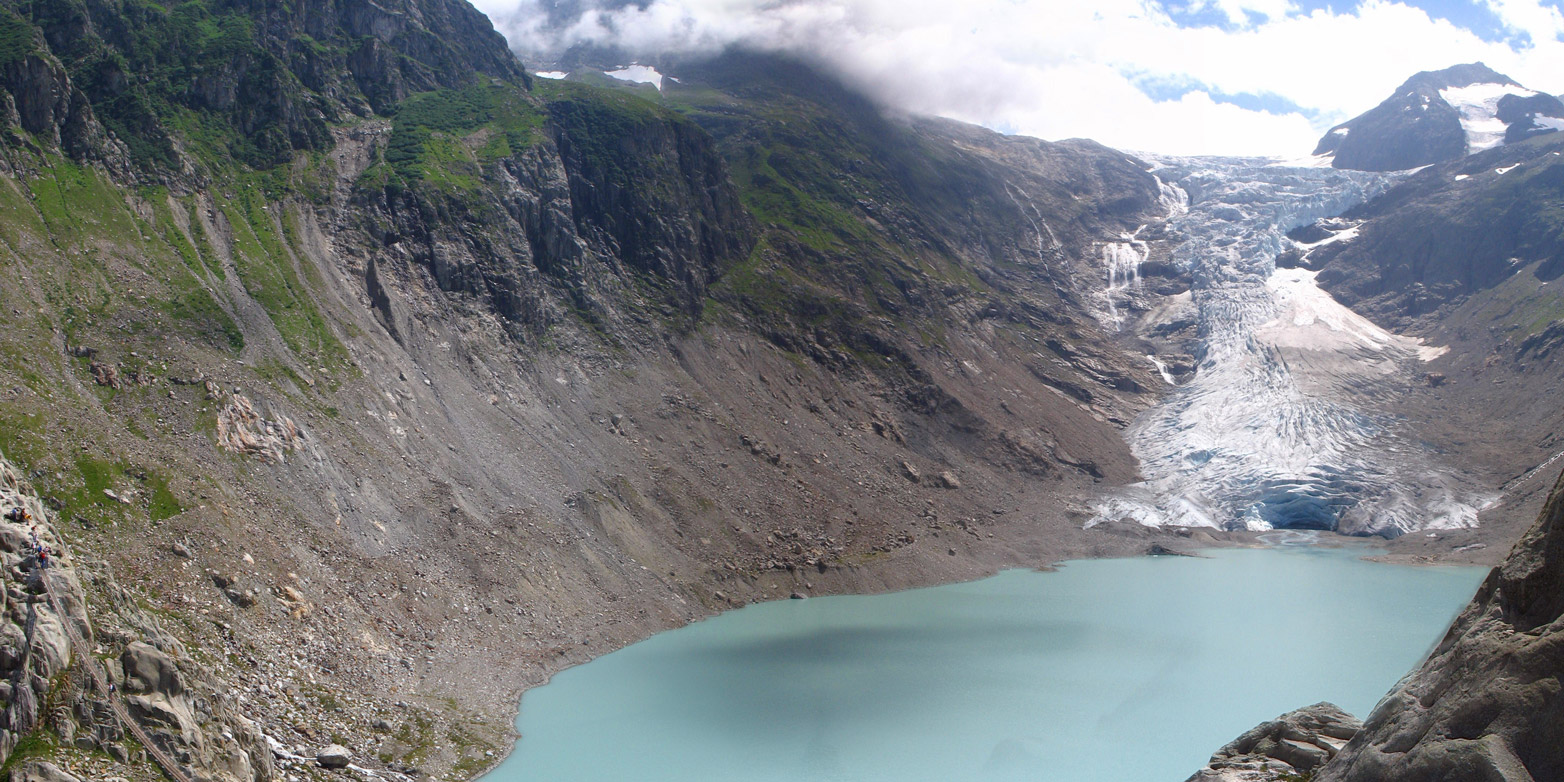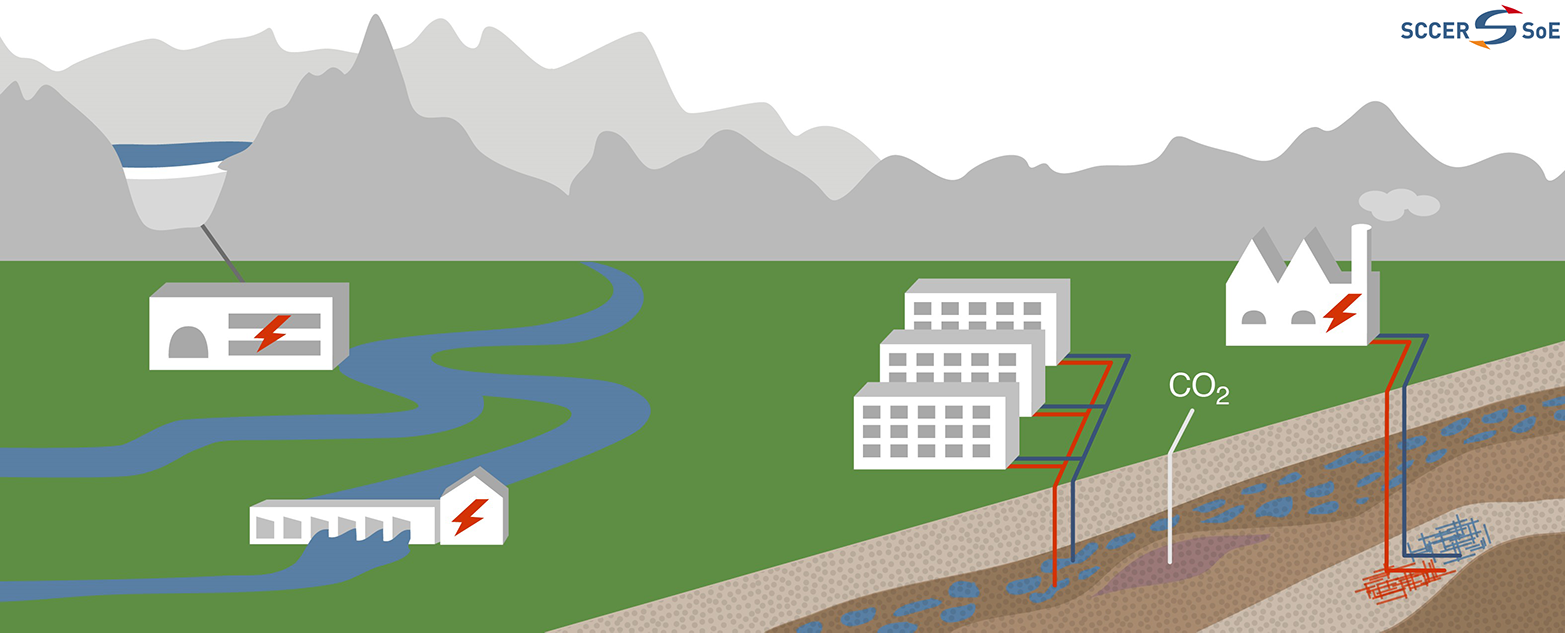A carbon-neutral response to rising electricity demand
Many everyday activities rely on electricity. As we look to 2050, this dependence is set to increase, with demand for electricity in Switzerland likely to rise to 50 percent. The increased demand can only be met by transforming the energy system.

Switzerland has set itself the goal of ending its greenhouse gas emissions by 2050. With this net zero target, the country hopes to play its part in limiting global warming to less than 1.5°C. The implications of this target for future electricity requirements – and the potential contributions of geothermal energy and hydropower in particular – have been the subject of ETH-led research at 25 Swiss scientific institutions, industrial companies and federal authorities as part of the Swiss Competence Center for Energy Research – Supply of Electricity (SCCER-SoE). Although this project initially focused on renewables as a substitute for nuclear energy, it ultimately took on a much broader scope. After all, the energy system of the future will not only need to deliver more power, but do so with negative emissions wherever possible. This requires much more comprehensive and, above all, more integrated solutions.
The electricity mix of the future
Led by the SCCER-SoE, a total of eight competence centres used scenarios to model the future composition of electricity supply and demand. The increased demand for electricity by 2050 will be largely driven by electrification in two areas: transport and heating.
To meet this rising demand and, above all, to compensate for the elimination of nuclear power plants, the supply of renewable energies will need to almost double by 2050. The greatest potential lies in photovoltaics. “However, this potential can only be utilised in full if we also take measures to offset the deficienciescompensate the fluctuations of this form of energy,” says Peter Burgherr from the Paul Scherrer Institute. Photovoltaics are poorly suited to delivering sufficient power in the winter months, and they produce a surplus of energy in the middle of the day in the summer months, which can tax the power grid.
To better cope with the irregular supply of electricity, it is imperative that we also make better use of the potential offered by other renewables such as wind, hydropower, biomass and geothermal energy. Surplus energy from photovoltaic systems could be stored in batteries temporarily, used for pumped storage plants, or converted into heat or hydrogen.
This is where hydropower comes into play. As the most important domestic energy source in Switzerland, both now and in the future, it not only contributes directly to the electricity supply but is also taking on an important role as a form of energy storage. But Robert Boes, head of the Laboratory of Hydraulics, Hydrology and Glaciology and a professor at ETH Zurich, qualifies this potential: “A significant expansion of hydropower in the next few decades is unrealistic given the stringent environmental protection requirements, profitability which is low or non-existent, and poor public acceptance of such projects.” Even under optimistic assumptions, that means additional electricity imports and domestic gas-fired power stations will still be required to meet demand.
In Switzerland, geothermal energy has the potential to contribute to future power generation and to provide a large proportion of the heat needed for heating purposes, hot water and certain industrial processes. And it is not only that water can be heated underground and then extracted – the subsurface can also be used to store water heated on the surface using surplus energy from photovoltaics or waste incineration plants, for example.
Not without negative emissions
As well as expanding its use of renewable energies, increasing the efficiency of existing technologies and implementing measures to minimise energy consumption, Switzerland will need to achieve negative emissions if it is to meet the net zero target. For example, these negative emissions could be achieved by capturing carbon dioxide directly from ambient air (direct air capture) or by burning biomass, capturing the resulting CO2, and placing it in long-term storage underground. Current findings suggest that the options for underground storage in Switzerland are not as extensive as originally hoped, and so there is a need for further exploration – along with research into storage options abroad.

The results from the SCCER-SoE’s seven years of research indicate that the net zero target is technically achievable by 2050. “However, this will require extensive and coordinated adjustments in many different areas that affect the whole of society. We can’t afford to waste any more time if we want to meet the stipulated climate goals by 2050,” says Domenico Giardini, professor at ETH Zurich and Head of the SCCER-SoE.
The Swiss Competence Center for Energy Research – Supply of Electricity
In coordination with the Swiss Federal Office of Energy, funding was provided by the Swiss National Science Foundation and the Commission for Technology and Innovation from 2013 to 2020 for eight competence centres in the area of energy research (SCCER) with a view to developing the knowledge base needed to meet the climate goals by 2050.
As part of the Swiss Competence Center for Energy Research – Supply of Electricity (SCCER-SoE), over 240 researchers – including 95 doctoral students – researched, developed and tested new technologies and optimised existing infrastructure for future energy production. The SCCER-SoE has created innovative research centres in close collaboration with industry, established technology platforms, invested in laboratories, and coordinated national and international research projects.
You can find further information on the SCCER-SoE here: external page www.sccer-soe.ch
The key findings derived over seven years of research are set out in detail in four external page summary reports.
Comments
No comments yet